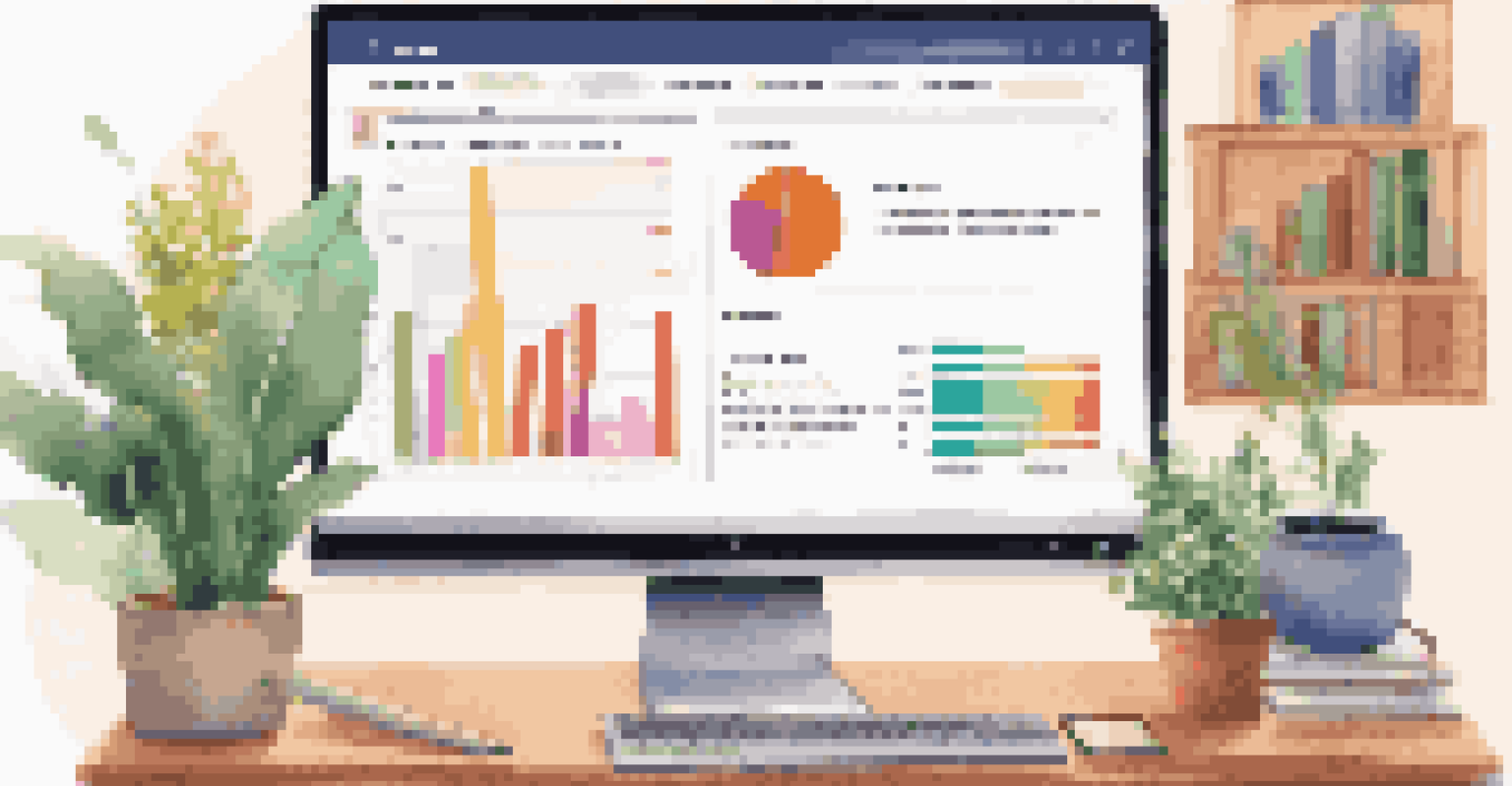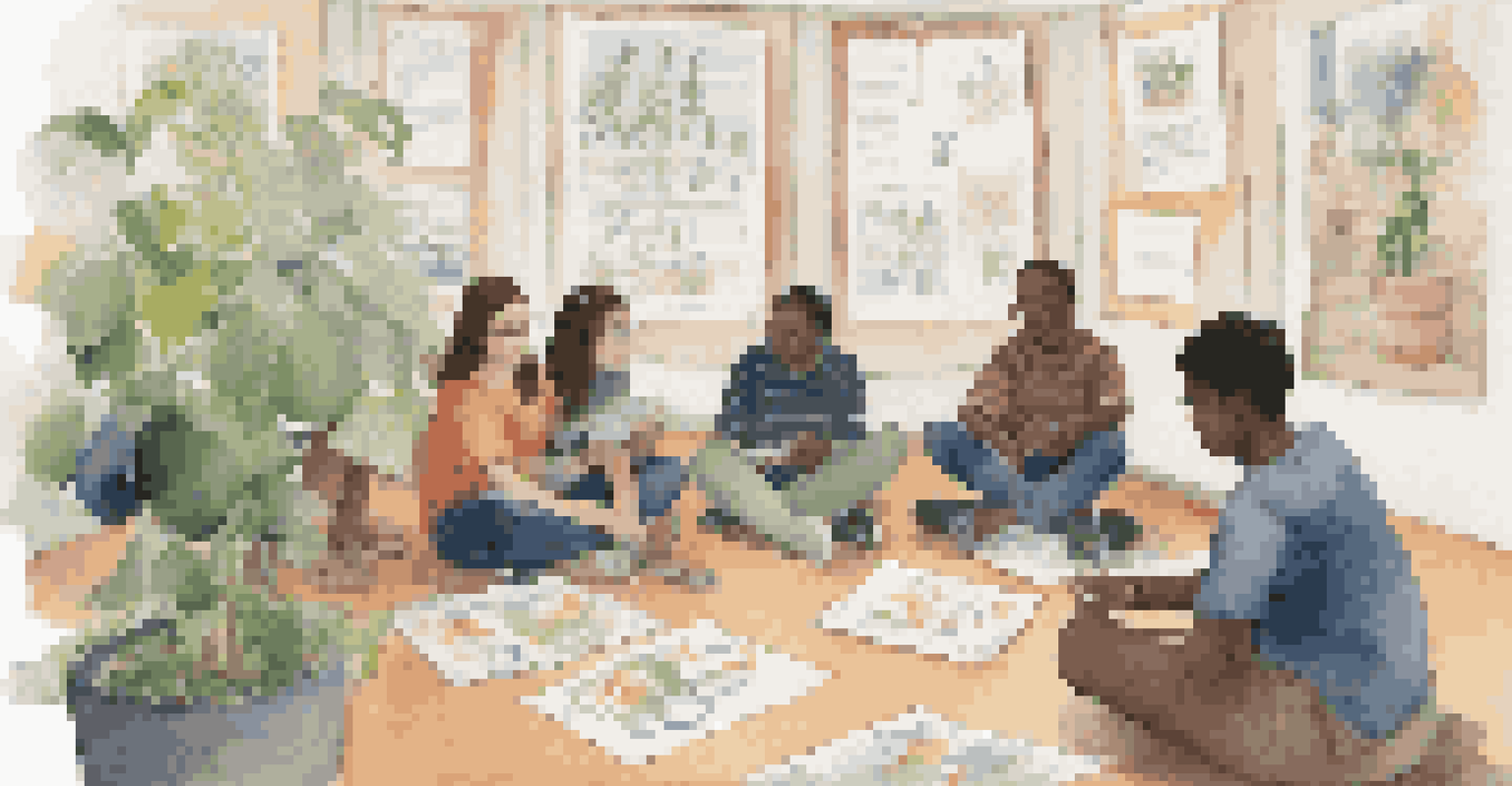Innovative Approaches to Blended Assessments in the Classroom

Understanding Blended Assessments in Education
Blended assessments combine traditional and digital methods, providing a comprehensive view of student learning. By integrating these approaches, teachers can cater to diverse learning styles, ensuring no student is left behind. Imagine a classroom where quizzes can be taken online and projects are shared through digital portfolios, creating a more engaging learning environment.
Assessment should not be seen as a mere formality or a checklist of tasks; rather, it should be a meaningful process that enhances learning and empowers students.
This method not only assesses knowledge but also encourages students to develop essential skills, like critical thinking and collaboration. For instance, a blended assessment might include a group project presented both in-person and through an online platform. This flexibility allows students to showcase their strengths in various formats while reinforcing the content learned.
Moreover, blended assessments can provide real-time feedback to students, helping them understand their progress. This immediate insight fosters a growth mindset, encouraging learners to take ownership of their education. In essence, blended assessments create a dynamic classroom that adapts to the needs of every student.
The Role of Technology in Blended Assessments
Technology is a powerful ally in implementing blended assessments. Tools like learning management systems (LMS) not only streamline the assessment process but also provide analytics on student performance. Imagine being able to track a student's progress over time, identifying strengths and areas for improvement seamlessly.

Additionally, technology enables the incorporation of interactive elements, such as quizzes and polls, that can enhance engagement. For example, using platforms like Kahoot! can turn a traditional quiz into an exciting game, making assessment less daunting for students. This gamified approach not only motivates learners but also helps them retain information better.
Blended Assessments Enhance Learning
By combining traditional and digital methods, blended assessments cater to diverse learning styles and foster essential skills.
Furthermore, technology facilitates collaboration among students, even in remote settings. Tools like Google Classroom allow students to work together on projects and provide peer feedback, replicating a classroom atmosphere online. This interconnectedness enriches the learning experience, making blended assessments more effective.
Creating a Balanced Assessment Strategy
A balanced assessment strategy ensures that various evaluation methods are employed to gauge student understanding accurately. This might include formative assessments like quizzes and summative assessments like final projects. The key is to provide a mix that keeps students engaged while measuring their progress effectively.
The greatest gift you can give your student is the opportunity to take ownership of their learning.
For instance, a teacher might use quick polls during a lesson to assess comprehension on the spot, followed by a more in-depth project that allows for creative expression. This dual approach not only reinforces learning but also caters to different learning styles. Some students may excel in quick thinking, while others shine when given time to craft their work.
By thoughtfully blending assessment types, educators can create a more inclusive environment. This balance also helps alleviate stress often associated with high-stakes testing, allowing students to demonstrate their knowledge in various ways. In doing so, teachers can foster a supportive atmosphere that encourages learning and growth.
Engaging Students with Authentic Assessments
Authentic assessments are designed to reflect real-world challenges, making learning more relevant for students. For example, instead of a traditional essay, a teacher might ask students to create a video presentation on a topic they are passionate about. This not only engages learners but also allows them to develop valuable skills they will use in the future.
Using real-world scenarios in assessments enables students to connect classroom learning to their lives outside of school. Imagine a science project where students design a sustainable solution for their community's environmental issues. This kind of project fosters creativity while encouraging critical thinking and problem-solving skills.
Technology Boosts Assessment Effectiveness
Utilizing tools like learning management systems and interactive platforms enhances engagement and collaboration in assessments.
Moreover, authentic assessments can be more motivating for students as they see the tangible impact of their work. When students understand that their projects can benefit real-world situations, their investment in learning increases significantly. This connection helps to cultivate a deeper appreciation for the subject matter.
Implementing Peer and Self-Assessments
Peer and self-assessments empower students to take charge of their learning journey. By evaluating their work and that of their peers, students develop critical reflection skills that are essential for lifelong learning. This process encourages them to think critically about their efforts and understand different perspectives.
For instance, a student might review a classmate's project using a rubric, providing constructive feedback. This not only helps the reviewer develop analytical skills but also fosters a sense of community within the classroom. Students learn from each other, creating a collaborative atmosphere that enhances learning.
Additionally, self-assessment encourages students to set personal goals and recognize their growth over time. When students reflect on their accomplishments and areas for improvement, they become more invested in their education. This ownership can lead to increased motivation and better academic outcomes.
Strategies for Providing Effective Feedback
Feedback is a crucial component of the assessment process, guiding students on their learning journey. Effective feedback should be timely, specific, and constructive, helping students understand their strengths and areas for growth. For example, rather than simply marking an assignment as 'incorrect', a teacher might highlight where the student went wrong and suggest ways to improve.
Implementing a feedback loop, where students respond to feedback and make revisions, can significantly enhance learning. This iterative process allows students to learn from their mistakes and see improvement over time. Imagine a scenario where a student revises their project based on feedback and ultimately achieves a better understanding of the subject matter.
Authentic Assessments Foster Relevance
Authentic assessments connect classroom learning to real-world challenges, increasing student motivation and investment in their education.
Moreover, leveraging technology can streamline the feedback process. Tools like Google Docs allow teachers to leave comments directly on student work, facilitating clear communication. This approach not only saves time for educators but also provides students with immediate insights into their performance.
Evaluating the Impact of Blended Assessments
Evaluating the effectiveness of blended assessments is essential for continuous improvement. Teachers can collect data on student performance to determine if these methods are achieving desired outcomes. For instance, comparing test scores before and after implementing blended assessments can provide insights into their effectiveness.
Feedback from students also plays a vital role in this evaluation. Surveys can help educators understand how students perceive blended assessments and their impact on learning. This feedback can guide future adjustments, ensuring that assessments remain relevant and beneficial.

Finally, staying informed about emerging trends in education can help teachers refine their assessment strategies. Participating in professional development opportunities allows educators to share experiences and learn from one another. By remaining flexible and open to change, teachers can ensure that their assessment methods continue to meet the needs of their students.